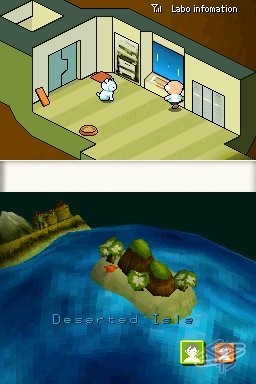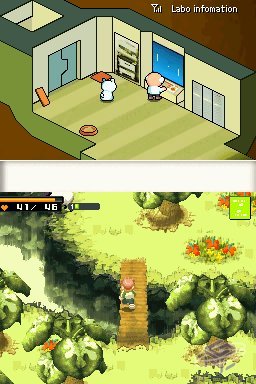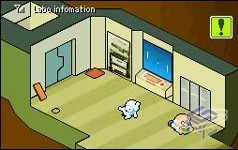TalkBack / Shifting World Interview with Guillaume Bouckaert
« on: March 28, 2012, 07:42:29 PM »We talk with developer Fishing Cactus about the latest entry in the Shift series.
http://www.nintendoworldreport.com/interview/29662
In its original form as a Flash game, and later as a downloadable title on PSP, Shift traded on the potential for puzzles in the simple duality of a black and white platforming space.
We recently had a chance to speak with Guillaume Bouckaert, Lead Designer on the upcoming 3DS entry, Shifting World, about the process of adapting the puzzler's formula to the handheld.
Nintendo World Report (NWR): The puzzles of Shifting World appear quite different in scope from the very contained, static levels of the Flash game. Is this an intentional change? Was the game conceived this way from the start, or did it come about naturally in development?
Guillaume Bouckaert (GB): When we started the project, we all wanted to make a bigger Shift than ever before. Making the puzzles larger was part of that process, and we defined the project like that from the start.
NWR: What was your plan for taking this extremely popular Flash game and making it a worthwhile 3DS game?
GB: We wanted to expand the scope of the game greatly, make it worth of a retail release. So we worked on expanding the shifting mechanic, adding new ways to use it to solve puzzles. We also implemented some mechanics that we wanted to implement in the last version of Shift to be released on consoles, but that we had to leave out. And of course, we added a totally new mechanic to complement the shifting mechanic, one that allows you to switch from 3D to 2D and the other way around.
NWR: The version of the game you made for the PSP, Shift Extended, didn't drastically alter the look or structure of the original Shift, which Shifting World appears to do. Was there a conscious decision to use the system's hardware to expand or tweak how the game looks and plays?
GB: Yes, we wanted to act on the opportunity of making a retail version of the Shift series to change the looks of the game. We also wanted to take advantage of the 3D feature of the Nintendo 3DS, so keeping the game in the same look as the original Shift wasn’t an option.

NWR: In addition to the black/white shifting mechanic, players can now compress the 3D environment into 2D. What was the logic behind implementing this extra mechanic?
GB: This new mechanic came about through two different processes. The first was that we wanted to give the player a new ability in this version of Shift, something entirely new that would be different from the shifting mechanic. The second was taking advantage the 3D display capabilities of Nintendo’s latest portable console. In the end, we came up with that new mechanic (we call it layer-shifting). It adds a lot to the puzzles of the game, and it looks really cool in 3D when you use it.
NWR: How did the game come to be a 3DS-specific retail product? Was there ever any intention of doing a smaller scale version, similar to Shift Extended, through the eShop?
GB: Well, we’ve always wanted to make a retail version of Shift. Aksys (our publisher) was there to give us the opportunity, so we jumped on the occasion.
We’re glad to have been given the chance to work on the 3DS. It’s a very interesting system, and we’re hopeful that the Shift series will find a lot of lovers on that console.

NWR: Were there any changes made to the game as a result of it being a retail product as opposed to a downloadable title? Is there anything you had planned for this version that didn't make into the final game?
GB: The scope of the game grew to justify the fact that it was going to be a retail product, as opposed to a downloadable game. As for the things that were planned but didn’t make it into the final game, there are a few puzzle mechanics that we had to cut and leave out. In part due to our tight schedule, but also because they weren’t refined enough to make it into the final game.
That was also the case for our first Shift game on a console: some of the mechanics weren’t just good enough at the time to make it into the game. But a few refinements later, they proved awesome enough to be implemented in Shifting World.
NWR: Are there any plans to support the game with downloadable content?
GB: Not at this point. It’s something we might consider in the future, but right now we don’t have any plans for downloadable content.
NWR: Where would you like to see the Shift series go from here?
GB: I would love to see it expand on some other system, let the series grow. The next logical step would be to create a version of the series for the home consoles. We don’t have any plans for that yet, but we’d love to be given the opportunity.





















